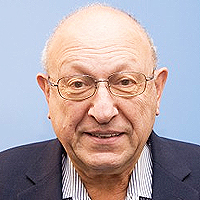Intravenous leiomyomatosis of the uterus: still discovered on anatomopathological examination
Published on: 2nd September, 2022
Background: Leiomyomas beyond the uterus are defined by benign smooth muscle cell tumors outside of the uterus. Intravenous leiomyomatosis is a rare type of uterine leiomyoma and is characterized by the formation and growth of benign leiomyoma tissue within the vascular wall. Herein, we present a case of Intravenous leiomyomatosis successfully treated by surgical removal and a review of actual medical recommendations.Case presentation: A 49 - year-old woman, maghrébin, G3 P2, no family history of uterine myomas mentioned, having systemic arterial hypertension, presented to our department with hypogastric pain and abnormal uterine bleeding in the prior five months resulting in anemia which required iron supplementation. On physical examination the vital signs were normal. A palpable mass in the hypogastrium was noted. The rest of the exam was unremarkable. Pelvic ultrasound showed a huge uterus with multiple heterogeneous leiomyomas, including at least one intracavity. Computed tomography scans and magnetic resonance imaging were not done initially due to the unaffordability of the patient. The initial diagnosis was leiomyoma. The decision to perform a total abdominal hysterectomy and bilateral salpingo-oophorectomy was taken. The abdomen was opened by a midline vertical incision. During surgery, multiple subserosal, intramural and submucosal fibroids ranging from 2 cm × 3 cm to 10 cm × 10 cm were seen. On pathological examination, the uterus measured 19 cm in the largest diameter and weighed 1.3 kg. The cut section showed white nodular myometrial masses. Microscopically, intravascular growth of benign smooth muscle cells is found within venous channels lined by endothelium. The diagnosis of Intravenous leiomyomatosis of the uterus without malignant transformation was retained. The patient was monitored for 14 months and subsequent computed tomography did not reveal any evidence of tumor recurrence. The follow-up will be performed annually till the age of menopause.Conclusion: Intravenous leiomyomatosis is a benign, rare and potentially lethal pathology. It especially affects premenopausal women with a history of uterine myoma, whether operated on or not. They require close and prolonged follow-up because of the high risk of recurrence.
Idiopathic ascites following caesarean section: A case report
Published on: 1st November, 2022
Ms X is a 40-year-old gravida 12, para 2+9 woman, who was admitted for an elective caesarean section at 38 weeks gestation following the previous two caesarean sections. Ms X had abdominal distension and generalised abdominal tenderness in the postoperative period. On investigation, she was found to have an elevated white cell count (WCC), C - Reactive Protein (CRP) and creatinine with free fluid in the abdomen on imaging but there was no evidence of perforation of any visceral organ. Ms X was treated conservatively for sepsis, an Acute Kidney Injury (AKI) and post-operative ileus and her symptoms gradually resolved. This is a case of idiopathic ascites post caesarean delivery with no clear cause.
Renal neoplasms and computed tomography
Published on: 8th November, 2022
Introduction: In recent years the increased utilization of imaging modalities has led to an accelerated diagnosis of renal masses. Initial diagnoses and staging are commonly done with the abdominal Computed Tomography (CT). This study evaluates the various aspects to consider when utilizing CT scan for the diagnosis of renal masses.Discussion: CT scan is the most important imaging modality to evaluate renal neoplasms. Postcontrast acquisitions can be tailored according to the indication for the study. This alongside various techniques, imaging modalities and classification systems may help differentiate the malignant Renal Cell Carcinoma, from benign or metastatic lesions, lymphomas or renal pseudotumor. Finally CT can also be utilized alongside other tools for staging the tumor. Conclusion: Certain CT imaging features are pertinent to evaluate the malignancy potential of renal lesions. However the CT alone may be inconclusive in diagnosing the majority of renal neoplasms, excluding AML with macroscopic fat. Hence it is recommended that the CT aid additional imaging modalities and tools to reach an accurate diagnosis.
Atypic subacute sclerosing panensefalitis in a six-year-old male
Published on: 23rd November, 2022
Subacute sclerosing panencephalitis is a rare, slow, and insidious neurodegenerative disease caused by measles. This disease mostly has a classic course. However, sometimes it can be presented with atypical manifestations. In this paper, we aim to present a six years old male patient that was hospitalized due to seizures and ataxia. Cerebral magnetic resonance imaging was normal on the first day of admission, but within a few days, the patient started to be apathetic. On the seventh day, magnetic resonance imaging showed hyperintense lesions in the thalamic, brainstem, and periventricular areas. Periodic epileptiform discharges were detected in the repeated electroencephalogram. Investigations from the cerebrospinal fluid showed markedly elevated measles virus IgG at 230U/ml consistent with the diagnosis of SSPE which should always be ruled out when a patient comes in with uncontrollable seizures, ataxia and apathy.
The value of medicine innovation
Published on: 15th December, 2022
Innovation is the usage of strain for development in healthcare. Predominant component science and sturdy personal quarter opposition have given a beginning to a revolution in new health technology. These are converted by using rigorous making an attempt into medicines, vaccines, devices and diagnostics that can additionally be used efficiently in numerous affected character populations. Innovation starts off evolved with invention and depends upon tasks. it truly is on the flip pushed via the incentives that have interaction with the private quarter in pursuit of a social welfare objective, greater fitness for all by ability to create the large majority of a new medication on the market nowadays, the non-public vicinity has created a unique - however fragile - mannequin for innovation that consists of with it sensible outcomes for the management of a load of sickness. Fitness-related applied sciences enhancements led thru the introduction of today’s medicine are estimated to have decreased human mortality with the resource by upwards of 50% between 1960 and 1990 [1]. Every advanced and growing international region has demonstrated this benefit. All areas have made improvement in human enhancement global places has dropped by way of extra than 1/2, from 1.1 billion in 1975 to five hundred tens of hundreds of thousands in 1999 [2]. accelerated global immunization insurance engaging in 80%-90% of infant inner the past due Nineteen Nineties [3] has had a giant effect at the infant mortality price, which all via the remaining 25 years fall thru 50% in the least developed global locations. Four for this cause Pharmaceutical innovation has been a necessary thing in assisting governments to reap their primary healthcare coverage desires.
The thoracoscopic approach in the management of parapneumonic pleural effusion in children
Published on: 23rd December, 2022
Background: Parapneumonic pleural effusion is a relatively common entity and continues to be a major cause of morbidity in children. However, managing this disease is still a matter of controversy between surgical and non-surgical options. With the advancement of mini-invasive surgery, video-assisted thoracoscopic surgery (VATS) has become a mainstay in the treatment of parapneumonic effusion in children. This study aimed to evaluate the clinical characteristics and pathological features of parapneumonic pleural effusion in children and to explore the feasibility and safety of the thoracoscopic approach in the pediatric population.Methods: The clinical data of all patients who underwent VATS for parapneumonic effusion between 2007 and 2021 were analyzed retrospectively. Factors that were documented included demographic criteria, clinical manifestations, preoperative examinations, therapeutic procedures, intraoperative findings, postoperative complications, and outcomes.Results: Totally, 35 patients with a mean age of 5.14 ± 3.9 years were operated on thoracoscopically. The mean duration of evolution before VATS was 9 days ± 4. All children were hospitalized in a Pediatric Continuing Care Unit. Antibiotic therapy was administrated in combination in all cases. Corticosteroid therapy was used in 2 patients. Thoracentesis was performed in 6 patients. Thoracostomy tube drainage was placed before surgery in 11 patients. The average duration of drainage before VATS was 6 days ± 4. VATS decortication and/or debridement was indicated as second-line in 23 patients. The average duration of the surgery was 51 minutes (20 min - 115 min). There is no conversion to open surgery and no intraoperative procedure-dependent complication. 4 children have early complications after the VATS and one patient had a late postoperative complication. There were no deaths during the hospital stay or follow-up. Conclusion: In skilled hands, VATS is safe, feasible, and effective in the management of parapneumonic pleural effusion in children with excellent outcomes.
The necessity of emotion management for the general public: a comparison of diagnostic changes in two anger-related psychiatric disorders
Published on: 23rd December, 2022
Although emotion management is essential to mental health, public health has not paid much attention to emotional conditions or disorders. By analyzing a nine-year diagnostic trend and sociodemographic characteristics of two mental disorders: Hwabyung and Intermittent Explosive Disorder (IED), this study demonstrated the importance of managing emotions precautionarily.Data reconstructed from the National Health Insurance Service were used to analyze the yearly diagnostic trend in the two mental disorders characterized by anger.Hwabyung was more common among women and middle-aged individuals, despite the varied number of diagnoses by year. Between 2010 and 2018, IED diagnoses gradually rose, with the average rate of increase the highest in the 20s for male IED diagnoses in 2017. The low prevalence of the IED in Korea compared to other Western countries and the gender and age differences in both Hwabyung and IED diagnoses suggest the role of cultural influences related to emotions (or emotional management).Especially in light of the world’s emphasis on resilience to COVID-19, these results indicate how public emotional management is essential during stressful situations. The results also highlight the need for community mental health programs tailored to gender and age.
Isolated multiple pericardial hydatid cysts in an asymptomatic patient: Role of the CMR
Published on: 6th January, 2023
Hydatid cysts primarily affect the liver and secondary involvement may be seen in almost any anatomic location. We describe the unusual pericardial location of the Echinococcus cysts in an asymptomatic patient with suggestive cardiac magnetic resonance imaging.
Failure-oriented-accelerated-testing (FOAT) and its role in assuring electronics reliability: review
Published on: 6th January, 2023
A highly focused and highly cost-effective failure-oriented-accelerated-testing (FOAT) suggested about a decade ago as an experimental basis of the novel probabilistic design for reliability (PDfR) concept is intended to be carried out at the design stage of a new electronic packaging technology and when high operational reliability (like the one required, e.g., for aerospace, military, or long-haul communication applications) is a must. On the other hand, burn-in-testing (BIT) that is routinely conducted at the manufacturing stage of almost every IC product is also of a FOAT type: it is aimed at eliminating the infant mortality portion (IMP) of the bathtub curve (BTC) by getting rid of the low reliability “freaks” prior to shipping the “healthy” products, i.e., those that survived BIT, to the customer(s). When FOAT is conducted, a physically meaningful constitutive equation, such as the multi-parametric Boltzmann-Arrhenius-Zhurkov (BAZ) model, should be employed to predict, from the FOAT data, the probability of failure and the corresponding useful lifetime of the product in the field, and, from the BIT data, as has been recently demonstrated, - the adequate level and duration of the applied stressors, as well as the (low, of course) activation energies of the “freaks”. Both types of FOAT are addressed in this review using analytical (“mathematical”) predictive modeling. The general concepts are illustrated by numerical examples. It is concluded that predictive modeling should always be conducted prior to and during the actual testing and that analytical modeling should always complement computer simulations. Future work should be focused on the experimental verification of the obtained findings and recommendations.
Mammographic correlation with molecular subtypes of breast carcinoma
Published on: 14th February, 2023
Aim: To determine the correlation between mammographic features of breast cancer with molecular subtypes and to calculate the predictive value of these features. Materials and method: This is a retrospective study of breast cancer patients presenting between January 2017 and December 2021, who underwent mammography of the breast followed by true cut biopsy and immunohistochemical staining of the tissue sample. Breast carcinoma patients without preoperative mammograms, those unable to undergo histopathological and IHC examinations and h/o prior cancer treatment were excluded. On mammography, size, shape, margins, density, the presence or absence of suspicious calcifications and associated features were noted. Results: Irregular-shaped tumors with spiculated margins were likely to be luminal A/B subtypes of breast cancer. Tumors with a round or oval shape with circumscribed margins were highly suggestive of Triple negative breast cancer. Tumors with suspicious calcifications were likely to be HER2 enriched. Conclusion: Mammographic features such as irregular or round shape, circumscribed or noncircumscribed margins and suspicious calcifications are strongly correlated in predicting the molecular subtypes of breast cancer and thus may further expand the role of conventional breast imaging.
Case report: contrast imaging in the setting of venous thrombosis
Published on: 28th February, 2023
Disruption to contrast agent supply chains for radiology investigations has become an additional consequence of the COVID-19 pandemic. Various recommendations, including dose reductions and choices of alternative agents, have been made to help account for this limited availability. This case demonstrated how two separate CT venograms with different contrast agents, undertaken on the same day for the same patient, yielded different results; venous thromboses were more prominent in the subsequent scan. Although there was some evidence of venous sinus thrombosis on the first scan, repeat imaging was required to further characterize the lesions identified. The case exemplifies the notion that diagnostic imaging should always be guided by a detailed history and examination. It also raises the discussion point of whether more strict or uniform protocols should be developed to facilitate contrast administration for radiology investigations. It is important that appropriate doses are always administered to maximize diagnostic yield.
Outcome of Outpatient Autologous Hematopoietic Stem Cell Transplantation in Patients with Multiple Myeloma and Relapsed and Refractory Hodgkin Lymphoma. The Experience of King Fahad Specialist Hospital in Dammam, Saudi Arabia
Published on: 8th March, 2023
Background: Autologous hematopoietic stem cell transplants (HSCT) is the standard of care for transplant-eligible patients with newly diagnosed multiple myeloma (MM) and patients with relapsed and refractory Hodgkin lymphoma (R/R-HL) who achieve chemosensitivity after salvage therapy. Although autologous HSCT is routinely performed in an inpatient setting, the procedure can safely be performed in an outpatient setting.Methods and materials: A retrospective study of patients with MM and R/R- HL who received outpatient autologous HSCT at King Fahad Specialist Hospital (KFSH) in Dammam, Saudi Arabia between the first of April 2017 and the 31st of January 2022 was performed.Results: Over the study period of 4 years and 10 months, a total of 90 outpatient autologous HSCTs were performed for 79 patients (54 patients with MM; 4 of them received planned tandem autografts and 7 other myeloma patients received second autologous HSCTs for relapsed or progressive disease; and 25 patients with R/R-HL) at our institution. The median ages of patients with MM and those with R/R-HL at HSCT were 50.4 years and 27.8 years respectively.At the presentation of their MM, the following high-risk (HR) features were encountered: stage II and III diseases according to the revised international scoring system (RISS) in 53.7%; adverse cytogenetics in 42.6% and extensive bone involvement in 53.7% of patients. In patients with HL at presentation, 48% of patients had stage IV disease according to Ann Arbor staging classification and 84% of patients had B symptoms.Survival for 100 days post-HSCT for all patients with MM and HL who received outpatient autologous transplants was 100%. For patients with MM, the overall survival (OS) rates at 3 years and 4 years post-HSCT were 80% and 67%, while the progression-free survival (PFS) rates over 3 years and 4 years were 58% and 38% respectively. For patients with HL, the OS at 6 years post-HSCT was 95% while the PFS rates at 3 years and 6 years post-HSCT were 84% and 62% respectively.Conclusion: Outpatient autologous HSCT for patients with MM and HL is safe, and feasible and can lead to short-term as well as long-term outcomes that are comparable to autologous transplantation performed in an inpatient setting. Additional benefits of outpatient autologous include saving beds and reducing hospital costs.
Left ventricular assessment in patients with significant mitral incompetence: a multi-modality imaging study
Published on: 9th March, 2023
Background: Detection of the deleterious effect of MR on LV is crucial in guiding the surgical decision. Aim of the study: Comprehensive assessment of LV with significant primary MR using (2D, 3D echo and CMR). Methods: 40 patients with significant MR have been recruited in a prospective study. Patients underwent 2D and 3D echo and CMR studies. LV volumes, function and GLS were calculated. Results: End diastolic and systolic volumes were significantly larger when measured by CMR (all p < 0.001). EDV measures were strongly correlated with CMR and 3D echocardiography. Conclusion: It’s important to identify early deleterious LV changes.
Case study (A and B): a patient with Parkinson’s disease
Published on: 15th March, 2023
Parkinson’s disease is a progressive and debilitating neurodegenerative disorder affecting millions of people worldwide. The disease is characterized by motor symptoms such as tremors, rigidity and postural instability, as well as non-motor symptoms such as depression and cognitive impairment. While there is no cure for Parkinson’s disease, there are various treatments available to manage symptoms and improve quality of life for patients.This case study examines a 65-year-old retired accountant, Mr. John Smith, who was diagnosed with Parkinson’s disease five years ago. Mr. Smith has been treated with a combination of medications, including levodopa and carbidopa and physical therapy to manage his symptoms. However, his symptoms have not significantly improved.This literature review explores the current research on Parkinson’s disease, including its pathophysiology, diagnosis and treatment. Parkinson’s disease is caused by the degeneration of dopamine-producing neurons in the brain, leading to a depletion of dopamine and the accumulation of alpha-synuclein protein, oxidative stress and inflammation. Diagnosis is based on clinical symptoms, neurological examination and response to dopaminergic therapy. Treatment focuses on managing symptoms, with medications and non-pharmacological interventions such as exercise and physical therapy. Deep brain stimulation is a surgical treatment option that has been shown to be effective in managing motor symptoms.While there is currently no cure for Parkinson’s disease, ongoing research into its pathophysiology and treatment holds promise for improving outcomes for patients. This case study highlights the importance of early diagnosis and personalized treatment plans for patients with Parkinson’s disease.
A case of hepatic intraductal papillary neoplasm of the bile duct
Published on: 21st March, 2023
Introduction: Intraductal Papillary Neoplasm of the Bile ducts (IPNB) is a rare entity characterized by exophytic growth of the bile ducts.Case presentation: In this report, we present a 57-year-old male with no prior medical history consulted for upper right abdominal pain, jaundice and pruritus. Abdominal Ultrasound (US) and magnetic resonance imaging/Bili-magnetic resonance were performed. They revealed that the circumferential parietal thickening of the common hepatic duct had extended approximately 4 cm with moderate dilatation of the left intrahepatic bile ducts. Computed tomography showed no evidence of distant metastasis.Biopsy revealed a high-grade intraductal papillary neoplasm. After 40 days, the patient had left hepatectomy with resection of the main bile duct and the gallbladder. Macroscopic examination of the surgical specimen showed a dilatation duct at the hilum with thickening of their walls.The histopathology report revealed multiple intra-hepatic papillary neoplasms with high-grade dysplasia with an invasive carcinoma component in the left hepatic duct without extending to the biliary wall, classified as pT1N0.Conclusion: This premalignant lesion has the potential to transform into invasive carcinoma if not properly diagnosed.Our case illustrates how early identification can lead to potential surgical resection.
Diagnostic accuracy of apparent diffusion coefficient (ADC) in differentiating low- and high-grade gliomas, taking histopathology as the gold standard
Published on: 10th April, 2023
Gliomas are known to be one of the most grievous malignant central nervous system (CNS) tumors and have a high mortality rate with a low survival rate severe disability and increase risk of recurrence. Aim of his study is to determine the diagnostic accuracy of apparent diffusion coefficient (ADC) in differentiating low-grade and high-grade gliomas, taking histopathology as the gold standard. It is a Cross-sectional validation study conducted at the Armed Forces Institute of Radiology and Imaging, (AFIRI) Rawalpindi, Pakistan from 28th February 2022 to 27th August 2022.Materials and methods: A total of 215 patients with focal brain lesions of age 25-65 years of either gender were included. Patients with a cardiac pacemaker, breastfeeding females, de-myelinating lesions and malignant infiltrates, and renal failure were excluded. Then diffusion-weighted magnetic resonance imaging was performed on each patient by using a 1.5 Tesla MR system. The area of greatest diffusion restriction (lowest ADC) within the solid tumor component was identified while avoiding areas of peritumoral edema. Results of ADC were interpreted by a consultant radiologist (at least 5 years of post-fellowship experience) for high or low-grade glioma. After this, each patient has undergone a biopsy in the concerned ward, and histopathology results were compared with ADC findings. Results: Overall sensitivity, specificity, positive predictive value, negative predictive value, and diagnostic accuracy of apparent diffusion coefficient (ADC) in differentiating low- and high-grade gliomas, taking histopathology as the gold standard was 93.65%, 87.64%, 91.47%, 90.70% and 91.16% respectively. Conclusion: This study concluded that apparent diffusion coefficient (ADC) is the non-invasive modality of choice with high diagnostic accuracy in differentiating low- and high-grade gliomas.
Dalbavancin and moleculight in the COVID-19 pandemic
Published on: 11th April, 2023
The COVID-19 Pandemic, which began in March 2020, and its associated surges, had an immense impact on our medical staff and their ability to perform their daily duties.The COVID-19 Pandemic necessitated hospital modifications, including the expansion of the Emergency Department, ICU, and Isolation units. The overwhelmed staff and overburdened ER and ICU required adjustments to deal with the Inpatient impasse. For example, temporary patient care rooms needed to be set up for the overflow of patients. The tsunami of the Pandemic almost overwhelmed our hospital.With the challenges presented to our hospital during the Pandemic, we needed a fresh perspective to our multi-disciplinary approach. Thus, we fathomed that the use and cost-effectiveness of both Dalbavancin, a long-acting lipoglycopeptide antibiotic combined with the diagnostic Moleculight Imaging Device would be a sound decision.We hypothesized that with the use of this cost-effective antibiotic in conjunction with the use of the Moleculight Imaging Device, with its fluorescent imaging, we could detect the presence of bacteria and assist our wound treatment and decision-making.A shift in patients from the Emergency Room/Inpatient Department to the Outpatient Department/Wound Care Center was made possible with the use of these two novel products.
Cognitive behavioral therapy treatment for drug addiction
Published on: 17th April, 2023
Drug addiction remains a major health concern following its devastating consequences to the users and the economy. Current statistics show a rising trend in substance abuse around the globe with approximately 284 million people engaging in drug abuse. Various approaches are used to treat the victims of drug abuse. Cognitive behavior therapy, a form of nonpharmacological intervention, has also been shown to be an effective treatment option for drug addiction. The use of Cognitive Behavioral Therapy (CBT) has grown since the 1970s to become one of the most important models of psychotherapy in this decade. Various empirical studies have shown the efficacy of CBT in well-controlled trials. A total of 19 randomized trials (cases) (with over 1400 patients treated) were selected and studied. In the various cases, results showed that patients were treated for drug and substance abuse disorders with the majority being those who abused cannabis, cocaine, alcohol and other opioids. In most cases, the CBT techniques that were used for drug addiction included cognitive restructuring, relapse prevention and contingency management. Components of CBT for drug addiction include skills and training, amplification of non-substance-related activities, approaches for managing urges, drug rejection and improvement of social aptitudes. Cognitive restructuring focuses on the identification of misconceptions and influencing the way people think about themselves by eliminating distorted thinking. Relapse prevention focuses on the identification and prevention of high-risk situations that may trigger the patient to engage in drug abuse. Contingency management reinforces positive behaviors and reduces negative behaviors through the use of rewards and incentives.
Osteopoikilosis: a rare case with interesting imaging
Published on: 17th April, 2023
Background: Osteopoikilosis (OPK) is a rare osteosclerotic dysplasia. It is usually asymptomatic and diagnosis is made incidentally by radiographic findings. It has a unique radiographic presentation with multiple small, well-defined, circular, or ovoid radiodensities which are distributed symmetrically in the epiphysis and metaphysis of long bones.Aim of the work: In this case report, a 38-year-old man with mild joint discomfort was diagnosed with OPK according to his radiographic findings and literature review.Conclusion: It is important to diagnose OPK and to distinguish it from other medical conditions to calm the patient and to reduce unnecessary investigation.
Results of a prospective strategy for focused Minimally Invasive Parathyroidectomy (MIP)
Published on: 3rd May, 2023
Neck exploration for primary HPT is the standard operation in which 4 parathyroid glands are identified and one abnormal parathyroid gland is removed. This is recommended for all patients with primary HPT. We hypothesized that most patients with primary HPT have a single abnormal parathyroid gland (adenoma) and parathyroid imaging studies will identify it and support a focused minimally invasive parathyroidectomy (MIP). This can be combined with ioPTH monitoring making bilateral exploration unnecessary. This paper reports a 93.4% success rate in 249 consecutive prospective patients with primary HPT over a 15-year period with a short operating time and few complications. The findings suggest that this alternate surgical MIP approach should be the procedure of choice for HPT patients.
















